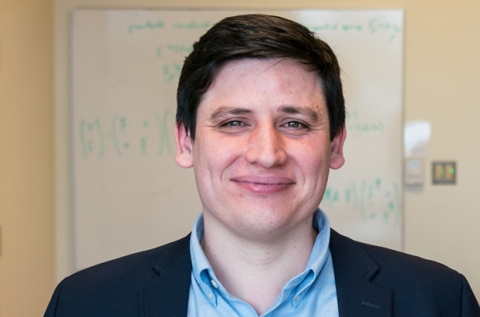
Date:
Location:
Speaker:
ABSTRACT:
Colloidal gels are formed during arrested phase separation. Sub-micron, mutually attractive particles aggregate to form a system-spanning network with high interfacial area, far from equilibrium. Such networks are useful as soft composites composed of a virtually limitless variety of materials in the particulate and fluid phases. They find applications in food as soft solids like yogurt and cheese, medicine as scaffolds for tissue engineering, and energy as flowable electrodes in flow battery devices. Engineering the growth and response of gels to large deformations is a central effort in all these applications. Models for microstructural evolution during colloidal gelation have often struggled to match experimental results with long standing questions regarding the role of hydrodynamic interactions among the suspended particles. In the present work, I discuss computational models of gelation incorporating hydrodynamic interactions, compare experimental measurements of the linear viscoelasticity in model colloidal gels with calculations of the same, and examine the response of colloidal gels to simple shear flow. I will show how large-scale anisotropies and heterogeneities emerge during the flow attractive colloids and discuss the microhydrodynamic mechanism that stabilizes these heterogeneities. Simple scaling models are employed to understand the engineer-able features of the inter-particle interaction that enable control of these flow induced phenomena.
BIO:
James W. Swan is an assistant professor in the Department of Chemical Engineering at MIT. He focuses on how microstructured, in particular nano-particle, materials can be manipulated for the benefit of society. His research on soft matter is broad and has included accurate measurement of biophysical forces and the self-assembly nano-particles in microgravity. Dr. Swan aims to combine theory and simulation to model the fluid mechanics and out-of-equilibrium statistical physics that are fundamental to complex fluids and other soft matter. His research has industrial sponsors (Shell, Genentech, Saudi Aramco) as well as sponsorship through the federal government (NSF). He earned NSF Career and an ACS PRF Doctoroal New Investigator awards in 2016.
James Swan received a BS in Chemical Engineering in 2004 from the University of Arizona where he worked with Drs. James Baygents and Raymond Goldstein on issues related to spatio-temporal pattern formation in diffusing and reacting systems. He earned a Masters degree in 2007 and a Ph. D. in 2010 in Chemical Engineering from the California Institue of Technology. His thesis work, under the supervision of Dr. John Brady, focused on low Reynolds number fluid mechanics and the role of macroscopic boundaries in hindering the dynamics of suspended micro-scale objects. This work led to important conclusions about the flow of complex fluids in confinement. Following this, he worked in the laboratory of Dr. Eric Furst at the Department of Chemical and Biomolecular Engineering at the University of Delaware directing experimental investigations of nano-particle self-assembly performed on the International Space Station by astronauts Sunita Williams, Kevin Ford and Chris Hadfield. He has been an assistant professor of Chemical Engineering at MIT since September 2013.



